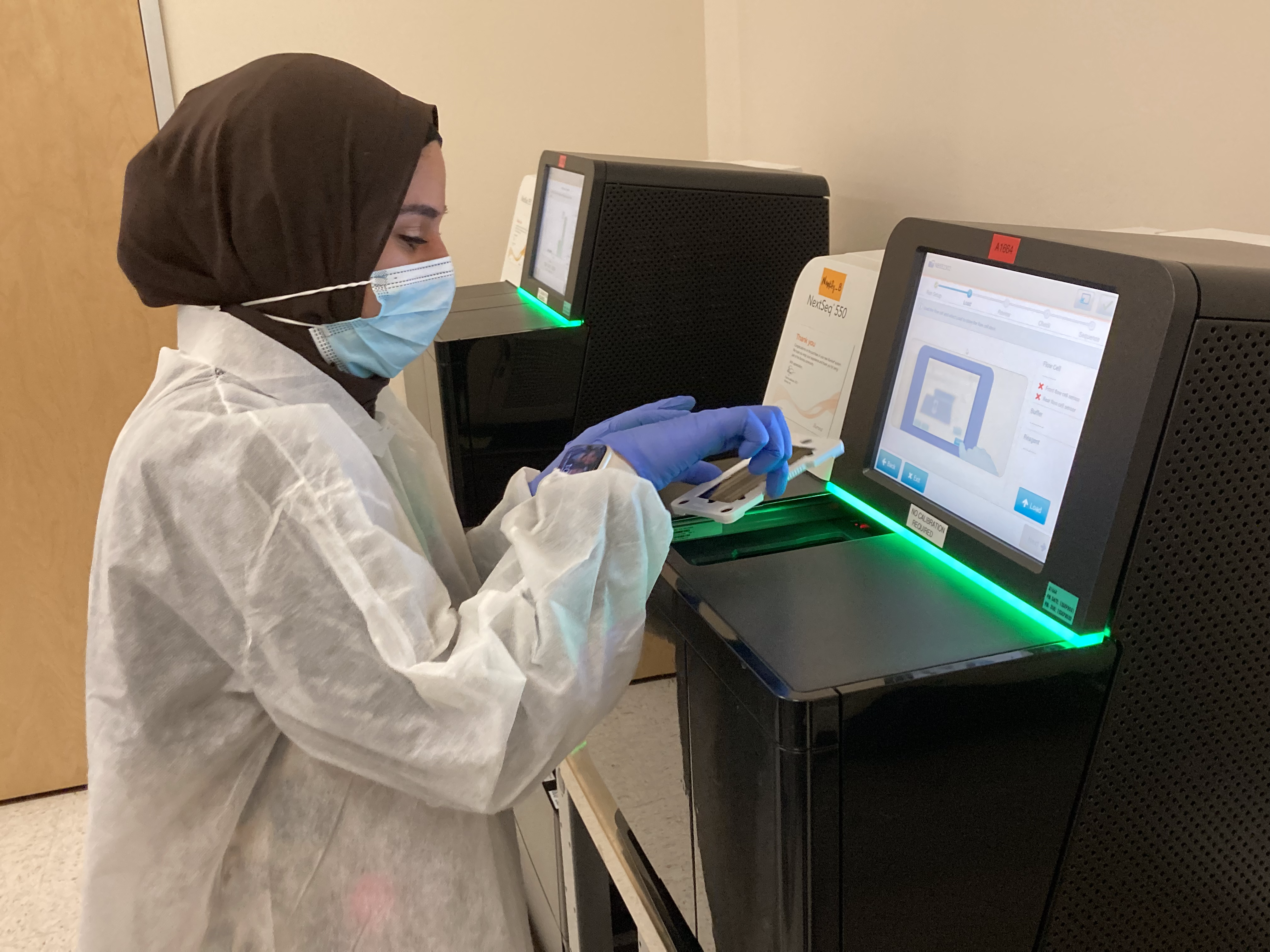When pharmaceutical companies design a new drug, they need to be sure it doesn’t cause harmful, off-target side effects, which is one of the most common reasons why new drug candidates fail. But testing for all of these off-target effects inside cells is very difficult, in part, because scientists don’t always know where to look for them.

Hanen Alassady prepares an HTG EdgeSeq sequencing run in the laboratory at HTG Molecular.
Credit: "Joe Alvin and HTG Molecular Diagnostics"
The company HTG Molecular Diagnostics has built a platform that can search for off-target effects of a drug by measuring a cell's RNA, a messenger molecule that translates our DNA into cells and tissues and changes when need a gene turned on or off.. By looking at the type and amount of a cell’s RNA through technology called HTG EdgeSeq, the company can determine whether a drug is blocking or changing the RNA message. “That may help make better drugs that get closer to the clinic,” says Debrah Thompson, who joined HTG Molecular Diagnostics in 2010 to develop HTG EdgeSeq.
The Tucson-based company had just received a Phase I Small Business Innovative Research (SBIR) grant from the National Human Genome Research Institute to fund the project. Although the business had multiple SBIRs, Thompson says, “That was really the grant that transformed the company.” Thompson would go on to lead the Phase II grant and become Vice President of Research.
Although HTG Molecular Diagnostics originally focused on diagnostics, their efforts now include both screening new drug candidates and developing their technology to treat diseases. The company’s technology has an edge over other sequencing platforms because it can determine sequences of broken RNA using small sample sizes, which is often the state of many fixed tissue samples. HTG Molecular Diagnostics offers both sequencing services and test kits.
Thompson says the project required an expensive sequencer, which wouldn’t have been funded without SBIR money, and, “It allowed us to take a pretty big risk on doing something that was brand new.” The grants also validated the technology and provided guidance on navigating the industry and becoming more competitive as a company.
To date, researchers have published 340 academic papers mentioning the HTG EdgeSeq technology. The company has had more than 30 participants in their Early Adopter Program, half of which have placed orders, and revenues have increased 7% compared to 2020.
Thompson is excited to move the company in new directions, and is heading an effort that will merge machine learning with a drug discovery platform using their sequencing technology. Ultimately, finding and addressing harmful side effects from pharmaceutical candidates will lead to more effective drugs to treat disease.







